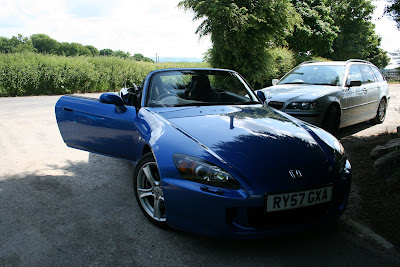
For some reason we've been seeing a similar thing recently. It seems that an ever increasing number of new cars have been, well, old ones. It all started with Volkswagen’s New Beetle in 1998, which brought retro motoring to hairdressers and estate agents the world over. Despite the name, the Golf-based fashion statement bears no mechanical resemblance to its illustrious predecessor. In most subjective respects that's a good thing – gone are the original car's lairy swing-axle handling traits and underwhelming performance, but is it really a Beetle, or just a bloated Mk4 Golf in a dress?
Next was the most successful retro car to date – the MINI. BMW launched its new-old small car, to almost universal praise in April 2001. Alec Issigonis' revolutionary design may only have been out of production for 12 months or so at that time, but the resemblance to its namesake was strictly cosmetic. The first thing that struck many people was its size. It dwarfed the original car. In fact, forget the Mini… in Clubman guise, the new MINI's wheelbase is fractionally longer an early Range Rover.
Like the Volkswagen, the 21st century MINI is, in many respects, much better than original, but however good BMW’s nod to the classic design may be, it’s never going to have the same impact. Austin's Mini revolutionised affordable transport in the UK and this made it more than a car, it was an icon. Of course purists will argue that the Mini was beaten to it – on the continent at least – by Fiat, in the shape of the 500. This time round it was a different story, but the Italian auto-giant wasn’t far behind and last year they launched a modern take on the Topolino.
It does make you wonder where it will end. Surely it's only a matter of time before Nanjing realise the huge, untapped retro-potential of a new Austin Allegro? After all, China has yet to discover the joys of the quartic steering wheel and the Roewe 75's front grill would make an excellent basis for the Vanden Plas version. For the full effect, sister-firm Shangai Automotive could release a direct competitor under the guise of the Morris Marina. There would be endless opportunities to mix modern technology with period features here too, such a contemporary DAB audio system that bizarrely only manages to pick up Radio 2 and a carbon-saving initiative, by which the car fails to start one day every week.
Should you get bored of driving your Allegro or Marina you could go for a ride on a Raleigh Chopper (re-launched in 2004); go to the cinema to catch King Kong (re-made in 2005), or maybe just watch some repeats on TV. So why the lack of the originality; have we run out of ideas? Has everything 'new' already been done? Personally it strikes me as a kind of sentimental nostalgia. People crave anything that offers comfort and familiarity when they're feeling down – a favourite song or a comfy old pair of slippers – and buying a car is no different. Perhaps we're all just hankering for an era before Gatsos, global-terror and climate change?
It's not all bad though. It seems that the retro concept works beautifully when it's used sparingly. Take Alfa's gorgeous 8C Competitzione. It's surely one of the most beautiful cars ever made and while there are hints of the company's previous offerings, such as the TZ and the T33 Stradale, it is fundamentally a fresh shape. Likewise, German sports car manufacturer Weismann's Roadster and GT models have a clear '50s and '60s influence with hints of the Austin Healey 3000 and Jaguar XK140, but they are nonetheless new designs which add something to the world of cars, rather than re-hashing a proven formula.
So, car makers… I implore you to follow their lead. Be a little original. It’s not the aesthetics as such - we want cars that have the character and feel of a masterpiece, rather than simply looking like a low budget fibreglass replica of one. By all means draw some inspiration from the past, but don’t forget to look forwards. That way, maybe the cars we’re building now will be remembered in thirty years too.










